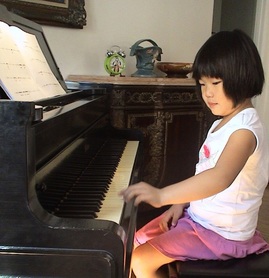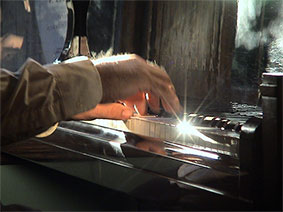Artistry at the Piano



This kind of piano education includes training the wrist to move up and down and side to side in particular “gestures” at particular times according to the musical score. Doing this creates a variety of tone from the piano depending on the position of the wrist in relation to the striking of the key. Phrasing, shaping and the “singing tone” are just a few examples of the different sounds that come from these wrist gestures.

Wrist gestures give pianists multiple benefits in three broad categories. First, the variety in tone that was already described above. Second, there are many different ways these gestures create an economy of motion. Using the wrist properly, a pianist can get their hands from one place to another faster and with less effort. This allows for faster yet more relaxed playing. Third, keeping the hands relaxed avoids a build up of tension. Over many years, tension in the hands can lead to injury. Using your wrists properly allows a pianist to interpret any musical score while producing a consistently beautiful tone.
There are many other skills but what I’ve described above is generally missing from the average beginning lesson. If it is taught at all then generally there is no systematic way of teaching these skills. It’s important to establish these habits at an early stage. Most students have not been exposed to these techniques at all in their foundational early lessons.